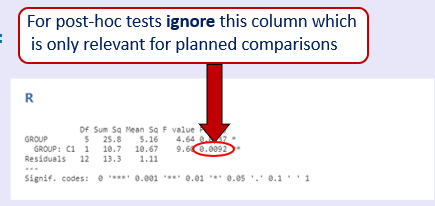Week 2- Factorial ANOVA revision
1/10
Earn XP
Description and Tags
03/10/24
Name | Mastery | Learn | Test | Matching | Spaced |
|---|
No study sessions yet.
11 Terms
ANOVA types
Two-way- 2 independent variables, better than t-tests as they can look at the impact of multiple manipulations on the data and explore the interaction effect
ANOVA can tell you whether the influence of one of the variables on scores is modulated by changes in other variables
Three-way- 3 independent variables
ANOVA- Interaction effects
Can answer questions where there’s multiple interactions that effect the research answer e.g. driving in fog- day/night conditions and clear/foggy conditions, both effect distance and combined might make a bigger difference than singular
4 conditions, 3 participants; IV- time and weather, DV- accuracy of distance estimate
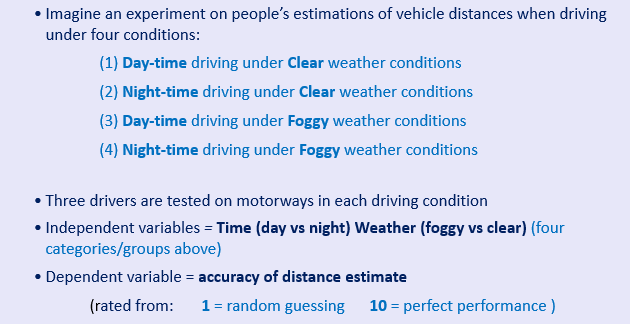
Driving time/weather example- results
Most accurate in day/clear, least in night/foggy- clear when you make a graph as compared to a table- need statistical support for this!
Average performance in Day driving (mean = 22) is better than that for Night driving (mean = 14)
Average performance in Clear driving (mean = 26) is better than that for Foggy driving (mean = 10)
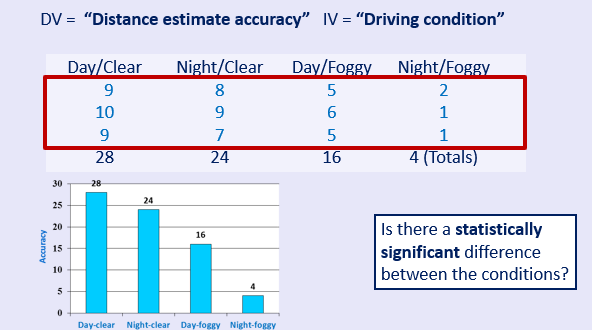
Driving time/weather- statistical support

Driving during day .vs. night has a reliable effect on distance judging performance (p< .001)
Performance is also dramatically affected by foggy .vs. clear conditions (p< .001)
The influence on performance in day .vs. night driving conditions changes depending on whether it’s foggy .vs. clear (0.011) F ratio is far smaller, showing it’s not as highly significant
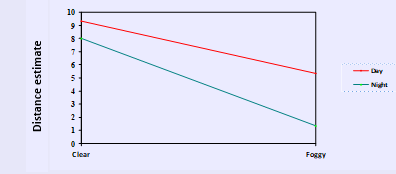
Driving time/weather- effect comparisons
Explaining the main effects- the bigger the difference between the 2 lines, the more significant the result (look at the midpoint of the main axis of that IV)
Both lines are on a gradient but they don’t cross over so not as pronounced interaction
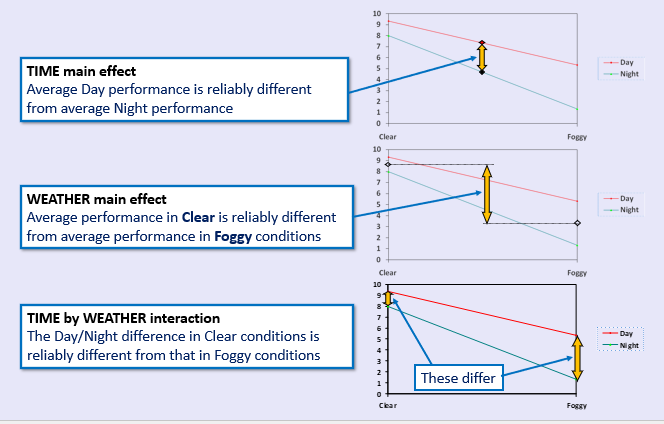
Driving time/weather- describing main effects and interaction
Distance estimates are affected by whether people are driving during day or at night (the TIME main effect)
Distance estimates are affected by whether people are driving in foggy or clear conditions (the WEATHER main effect)
The average difference in Day compared with Night estimates is reliably affected by whether people are driving in foggy or clear conditions (the TIME*WEATHER interaction)
Running a 3 way ANOVA
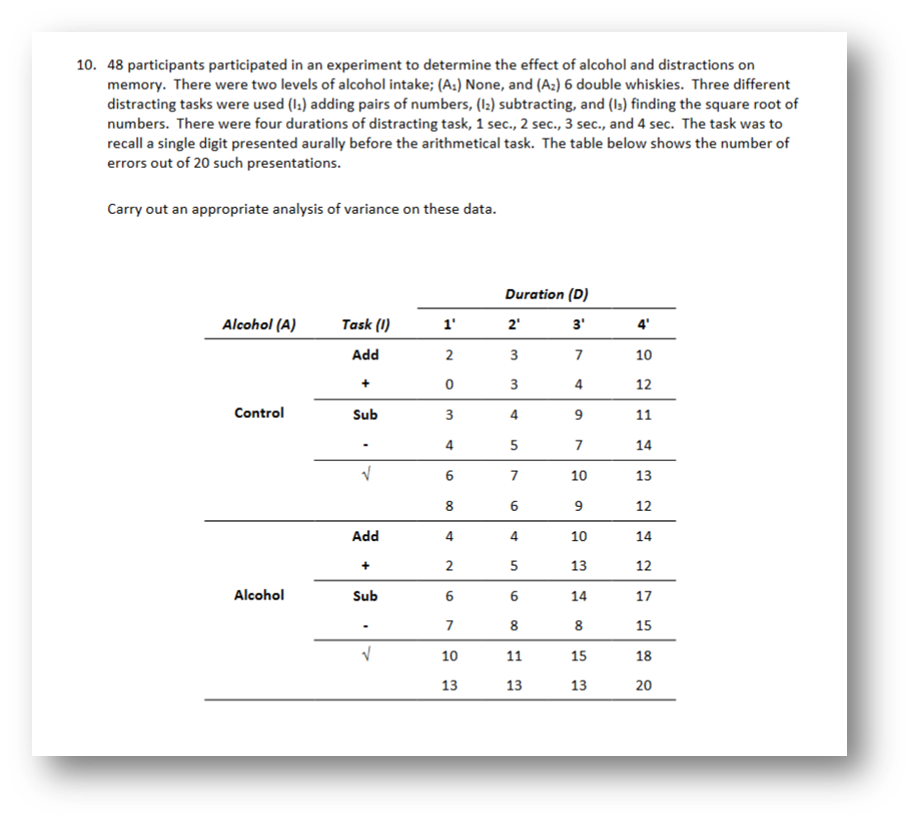
Data should be F- 2dp and P- 3dp
3 way ANOVA example results
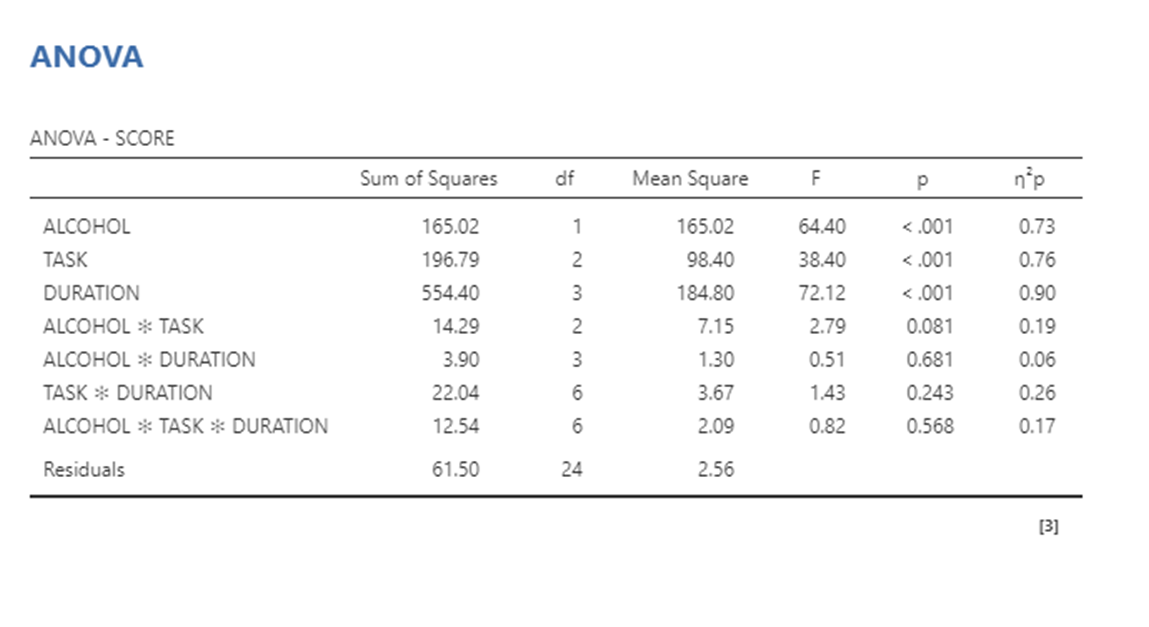
F ratio is signal .vs. noise- real interactions is our signal and noise is other things that are effecting it/error term (possibility that interaction is due to chance)
Planned .vs. unplanned contrasts
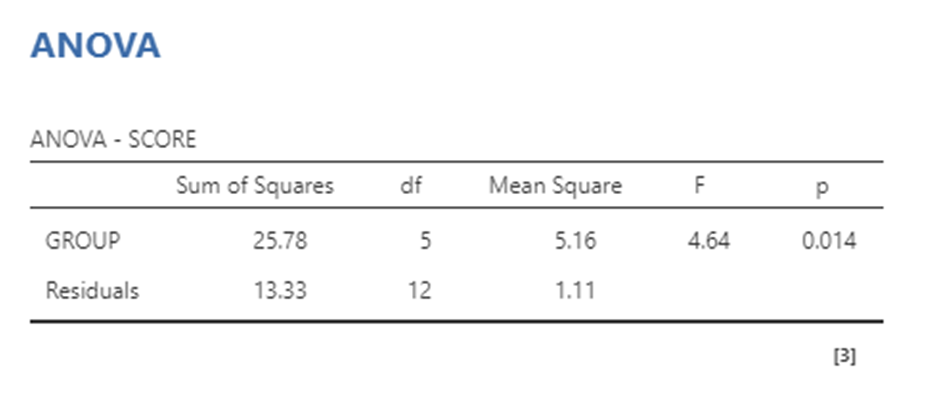
Need to do a contrast to see where the difference is- can be planned (a priori, designed before the experiment) or unplanned (post-hoc, a posteriori, designed after the experiment)
Post-hoc procedures
Various procedures include the Newman/Keuls test, Duncan’s Multiple Range test, Tukey’s test, Dunnett’s test and the Scheffé test (hardest to pass)
These tests reduce the likelihood of Type 1 error by increasing the critical value of the test statistic
Post-hoc- running this contrast
Run the contrast, ignore the C1 P value (only for planned comparisons)
Scheffe criterion = (k - 1) x Tabled value of Fk-1, error df
K= no .of levels of the factor being examined
Error df= degrees of freedom in the original ANOVA (same as contrast table)
In example- k= 6 (as there were 6 groups) and error df= 12
Look up critical value in F table for 5,12 and times it by 5 (k-1)
A calculated contrast F-ratio can be declared as significant at the 5% level if the computed value is greater than or equal to the Scheffé criterion
